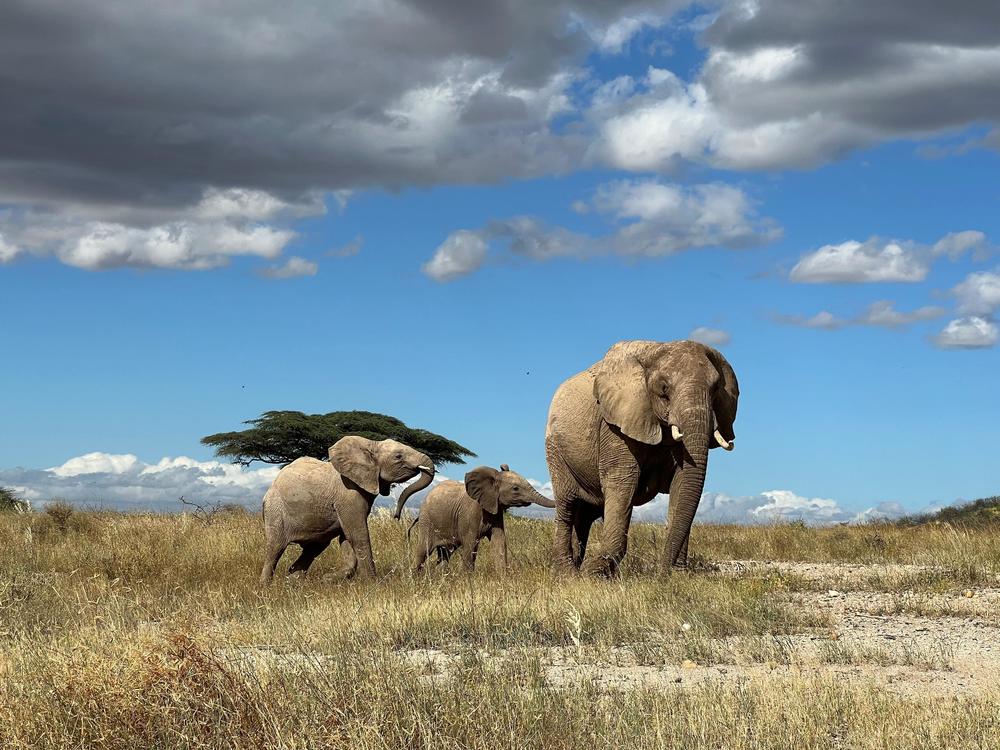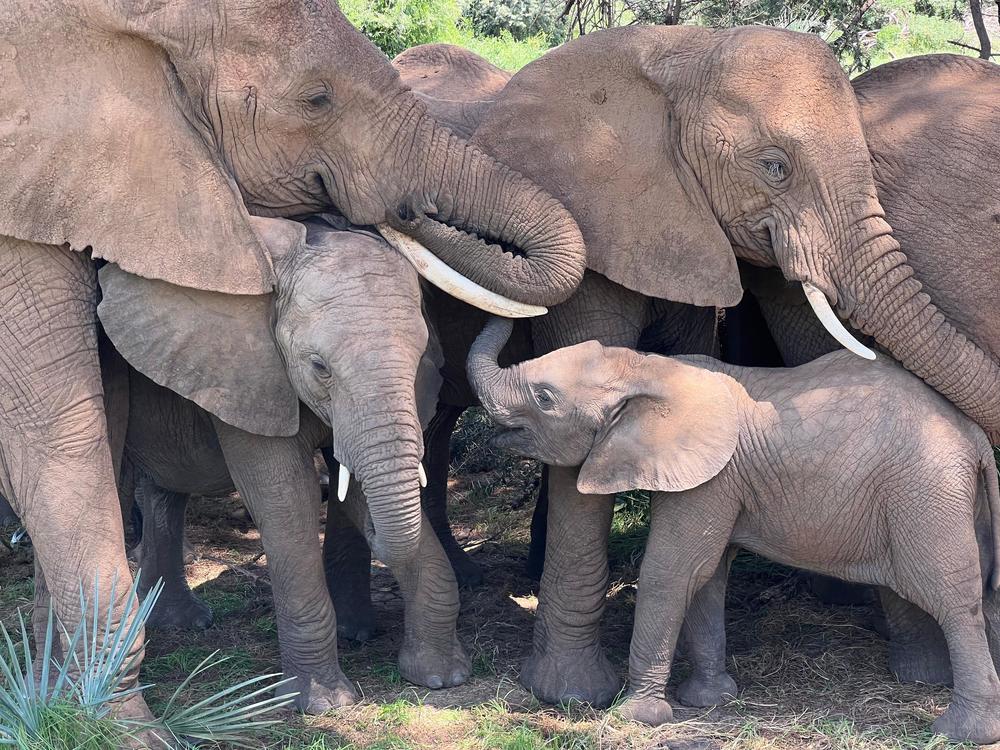Section Branding
Header Content
Wild elephants may have names that other elephants use to call them
Primary Content
Wild elephants seem to address each other using distinctive, rumbling sounds that could be akin to individual names.
That’s according to a provocative new study in the journal Nature Ecology & Evolution, which was inspired by earlier work showing that bottlenose dolphins have signature whistles.
“Sometimes another bottlenose dolphin will imitate somebody else's signature whistle in order to get their attention, so effectively calling them by name,” says Mickey Pardo, a biologist at Cornell University.
He wondered if elephants, which are known to be vocal mimics, might do something similar.
“The idea from the outset of this project,” says Pardo, “was to try to figure out if elephants have names.”
He means names that the animals call themselves — rather than names like Margaret and Marie that researchers working in nature preserves have given them.
Elephants’ trumpeting is well known, but Pardo says trumpeting is an abrupt noise that’s more like screaming or laughing. He figured that if elephants had names, they’d be somehow encoded in elephants’ constant, low-frequency rumblings.
“The rumbles themselves are highly structurally variable,” says Pardo, who conducted this research while working at Colorado State University. “There's quite a lot of variation in their acoustic structure.”
And elephants make these particular noises in all kinds of contexts — everything from greeting family members to comforting a calf to staying in touch with relatives over long distances.
So Pardo and some colleagues analyzed recordings of 469 rumbling calls that wild African elephants had made to each other in the Amboseli National Park and Samburu and Buffalo Springs National Reserves in Kenya between 1986 and 2022.
For every recorded call, the researchers knew the identity of the elephant making the rumble as well as, based on the context, the elephant that was being addressed.
If elephants had names, not every call would be expected to contain one — just like people don’t use each other’s names every time they speak to each other.
Still, the research team used machine learning to see if the rumbles contained identifying information — essentially, a “name” — that their computer model could learn to use to accurately predict the receiver of a call.
What they found is that their model was able to identify the correct elephant recipient of the call 27.5% of the time, which is much better than it performed during a control analysis that fed it random data, says Pardo.
This indicates, he says, that “there must be something in the calls that's allowing the model to figure out at least some of the time who that call was addressed to.”
The researchers then did some field work to see if 17 elephants — all female except for one — might recognize their own “names” and react preferentially to recordings that contained those sounds.
“We had to find a situation where a specific elephant was by herself, or at least not with the individual who made the recording,” he says, explaining that the team would then play the recording through a loudspeaker.
They used different recordings on different days. Depending on the day, the elephant would either hear a recorded call that was originally addressed to her or hear a call made by the same elephant that was not intended for her.
And, it turns out, the elephants generally seemed to know when a rumbling message was actually meant for them, suggesting that it contained something like a name. When they heard those calls, they approached the loudspeaker more quickly. They also vocalized a reply more swiftly, and made more response calls.
“The elephants responded much more strongly on average to playbacks of calls that were originally addressed to them relative to playbacks of calls from the same caller that were originally addressed to someone else,” says Pardo.
The results of those playback experiments looked “very convincing,” says Karl Berg, a biologist at the University of Texas Rio Grande Valley.
“I have no doubt that they're addressing them with these, you know, unique labels,” says Berg. “Now, are they nicknames? Are they names? Where do they come from?”
Berg wasn’t part of this research team but has studied how wild parrot nestlings acquire unique signature calls, aka names, by slightly modifying the signature call of their caregivers.
He notes that in this elephant study, rumbles containing identifying information often seemed to be generated by mothers who were addressing their calves.
“A good bit of this was between the moms and their calves,” says Berg. “It sure seems like they might be getting it from mom.”
So far, though, no one has been able to figure out exactly what acoustic features in an elephant’s low-frequency rumblings might equate to a name.
“I'd really like to be able to isolate the name of specific individual elephants,” says Pardo, “because if we could do that, we could answer a lot of other questions that we weren't able to fully figure out in this study.”
It’s not clear, for example, if elephants all use the same “name” when addressing the same recipient. The researchers also don’t know if elephants talk about each other in the third person. “Do they ever use somebody’s name when they’re not there?” wonders Pardo.
Berg notes that animals that use name-like sounds — humans, dolphins, parrots, and now elephants — all are intelligent, long-lived social animals that live in stable groups.
But that doesn’t mean that all of these creatures use names in exactly the same ways.
“People might assume that elephant names work in exactly the same way as human names, which is not necessarily true,” says Pardo.
After all, he notes, humans and elephants are separated by tens of millions of years of evolution. “That’s a pretty long time.”


